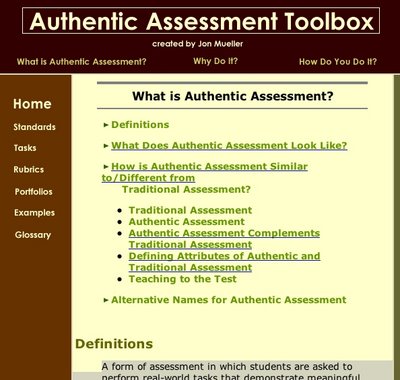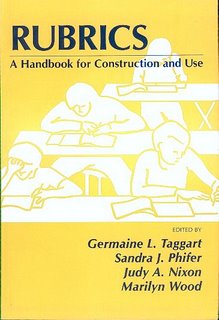Theological Education Journal
Note that Theological Education journal has got several recent issues devoted to discussions on assessment. Below, I have listed the relevant issues together with their content:
Autumn 1998 Vol. 35, No. 1 Models of Assessing Institutional and Educational Effectiveness: The Pilot School Project
Introduction
Daniel O. Aleshire
Developing New Evaluative Structures and Procedures
Susan E. Davies, Bangor Theological Seminary
Evaluation: Context, Lessons, and Methods
James A. Meek, Covenant Theological Seminary
Assessment and Institutional Improvement: A Case Study
David Hogue, Garrett‐Evangelical Theological Seminary
Under Review: Comments on the Reaccreditation Process Using the New ATS Accrediting Standards
William H. Brackney and R.E. Vosburgh, McMaster Divinity College
Set in Motion: The Story of Transitions at Memphis Theological Seminary
Mary Lin Hudson, Memphis Theological Seminary
Evaluation and the Educational Effectiveness Circle
Sarah Ann Sharkey, O.P., Oblate School of Theology
Assessment and Planning in a University‐Related Theological School
Dale Launderville, O.S.B., Saint John’s University School of Theology
Mission‐Focused Evaluation: A Work in Progress
Duane A. Priebe and Kathleen L. Priebe, Wartburg Theological Seminary
2003 Vol. 39, No. 1 The Character and Assessment of Learning for Religious Vocation
The Character and Assessment of Learning for Religious Vocation: M.Div. Education and Numbering the Levites
Daniel O. Aleshire
Learning Goals and the Assessment of Learning in Theological Schools: A Preliminary Survey
Gordon T. Smith and Charles M. Wood
Knowing and Caring
Charles M. Wood
Getting to the Question: Assessment and the Professional Character of Ministry
Victor J. Klimoski
What is the Literature Saying about Learning and Assessment in Higher Education?
Carolyn M. Jurkowitz
Exploring the Process of Learning and Assessment: Report on the ATS Workshop on Assessing Theological Learning
Eleanor A. Daniel
Assessing Assessment: An Accreditation Visitor’s View of ATS Outcome‐Oriented Standards
Loyde H. Hartley
2003 Vol. 39, No. 2 Institutional Assessment and Theological Education: “Navigating Our Way”
Introduction
Jeremiah J. McCarthy
Holding Itself Accountable: The Board’s Responsibility for Self-Assessment
Rebekah Burch Basinger
Presidential Assessment: The Delicate Balance
Vincent Cushing, O.F.M.
Faculty Evaluation: Conversations with Colleagues
Richard Benson, C.M.
Assessing Spiritual Formation in Christian Seminary Communities
H. Frederick Reisz, Jr.
Student Evaluation at Kenrick School of Theology
Lawrence C. Brennan, S.T.D.
Formational Initiatives at Wycliffe College
Merv Mercer
A Call to Growth: The Potential of the Profiles of Ministry Program
Francis A. Lonsway
The Pragmatics of Assessing Master of Divinity Students
William R. Myers
Assessing a Doctor of Ministry Program
Barbara Horkoff Mutch
Serendipity or Grace? What Evaluation Has Taught Us about Education and Ecclesiology in Distance Learning
Charles E. Bouchard, O.P.
Assessment of Student Learning: Some Perspectives
John H. Erickson
Assessment of Ministry Preparation to Increase Understanding
John Harris
2006, Vol. 41, No. 2 Character and Assessment of Learning for Religious Vocation
Vocation in a New Key: Spiritual Formation and the Assessment of Learning
Mary Kay Oosdyke
Speaking Assessment in the Local Vernacular
Linda Lee Clader
Leclercq among the Blue Devils: Assessing Theological Learning in the Modern University
Willie James Jennings
Progressing Toward Ministry: Student Perceptions of the Dispositional Evaluation Process
at Emmanuel School of Religion
Jack Holland
Preparing Leaders for Mission: The Experience of Assessment at Luther Seminary
James L. Boyce and Richard W. Nysse
Practicing Assessment/Resisting Assessment
Robert A. Cathey
Preaching, Proclamation, and Pedagogy: An Experiment in Integrated Assessment
Elaine Park
Moving the Mission Statement into the Classroom
Jo-Ann Badley
Evaluation Rubrics: Weaving a Coherent Fabric of Assessment
Stephen Graham, Kimberly Sangster, and Yasuyuki Kamata
Toward an Integrated Model of Assessment
Dennis H. Dirks
In addition, here is a link to the updated Theological Education Journal Index














